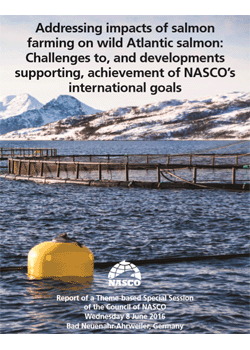The North Atlantic Salmon Conservation Organisation (NASCO) is an international organisation established under the Convention for the Conservation of Salmon in the North Atlantic Ocean in October 1983 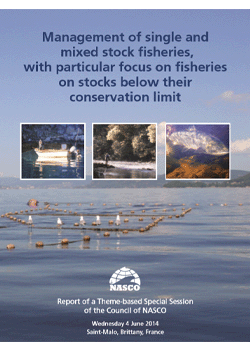 (established under the United Nations Convention on the Law of the Sea 1982). The organisation brings together the European Union and six Governments to collaborate on efforts to conserve and manage Atlantic salmon stocks.
(established under the United Nations Convention on the Law of the Sea 1982). The organisation brings together the European Union and six Governments to collaborate on efforts to conserve and manage Atlantic salmon stocks.
The Convention created a large protected zone, free of targeted fisheries for Atlantic salmon in most areas beyond 12 nautical miles from the coast. One immediate effect was the cessation of the salmon fishery in the Northern Norwegian Sea which at its peak in 1970 harvested almost 1,000 tonnes of salmon.
While NASCO’s initial focus was on developing management measures for the distant-water fisheries at West Greenland and the Faroe Islands, it is widely accepted that conservation and restoration of salmon stocks cannot be achieved by these measures alone. NASCO has broadened its base and now addresses a wide range of issues including management of salmon fisheries by States of Origin, habitat protection and restoration and aquaculture and related activities. Agreements and Guidelines have been developed on each of these topic areas.
As part of the UK, Scotland is a member of the North-East Atlantic Commission, alongside Denmark (in respect of the Faroe Islands and Greenland), Norway, the Russian Federation and the European Union.
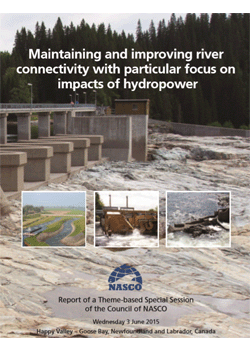 The Commission provides a forum for discussion on the conservation and management of salmon stocks and proposes both regulatory measures and scientific research to be carried forward. Members of NASCO then agree on these measures and move to implement them in their respective countries, reporting on progress in annual meetings of the NASCO Commissions.
The Commission provides a forum for discussion on the conservation and management of salmon stocks and proposes both regulatory measures and scientific research to be carried forward. Members of NASCO then agree on these measures and move to implement them in their respective countries, reporting on progress in annual meetings of the NASCO Commissions.
In 1998, it was agreed that all NASCO Parties would adopt and apply a Precautionary Approach to the conservation and management of salmon. This requires that, where research is inadequate or information is not available, any management decisions should be taken by erring on the side of caution. Where wild fish are concerned, this means acting on more limited knowledge which demonstrates the potential for substantial impacts to wild fish populations.
NASCO has adopted Resolutions, Agreements and Guidelines that address the Organization’s principal areas of concern for the management of salmon stocks.
Fisheries Management Scotland is an accredited Non-Governmental Organization (NGO) with observer status at NASCO meetings. The conditions governing observer status have been relaxed progressively and increased participation by the NGOs in NASCO’s work gives the NGO group an opportunity to influence the work and priorities of NASCO.
NASCO and Aquaculture
The Willia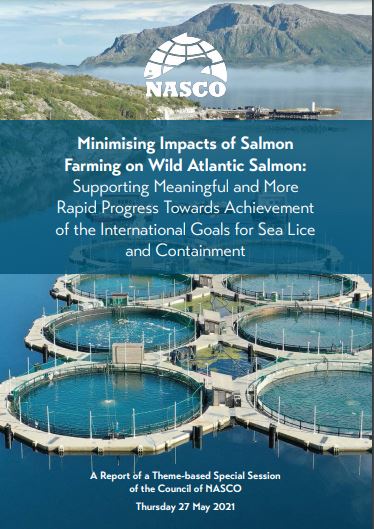 msburg Resolution was adopted by NASCO and all participating Parties in 2003, and is designed to “minimise impacts of aquaculture, introductions and transfers and transgenics on the wild stocks”.
msburg Resolution was adopted by NASCO and all participating Parties in 2003, and is designed to “minimise impacts of aquaculture, introductions and transfers and transgenics on the wild stocks”.
Following this in 2009, NASCO, through a Task Force comprising representatives of NASCO Members, the salmon farming industry and NASCO’s accredited NGOs, designed two International Goals to address the impacts of sea lice and escaped salmon on wild Atlantic salmon. Fisheries Management Scotland support the precautionary approach built into the two goals adopted by NASCO as follows:
- 100% of farms to have effective sea lice management such that there is no increase in sea lice loads or lice-induced mortality of wild salmonids attributable to the farms.
- 100% farmed fish to be retained in all production facilities.
Fisheries Management Scotland are working to ensure that progress towards these goals is made in Scotland.
Theme-based Special Sessions
NASCO’s Theme-based Special Sessions (TBSS) are intended to allow for the exchange of information and sharing of best practice on a topic related to NASCO’s agreements and guidelines. These sessions usually take the form of a whole or half day of presentations and discussion on a particular topic, usually at the time of the NASCO Annual Meeting. In recent years, these have included the impact of salmon farming, the risks and benefits of hatcheries and stocking, impacts of hydropower and management of mixed stock fisheries. Thye reports from these sessions can be viewed by clicking the images on the right of this page.
Implemention
Each jurisdiction is required to deve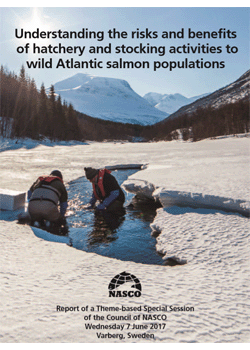 lop Implementation Plans detailing measures to be taken over five year periods in relation to three areas of concern:
lop Implementation Plans detailing measures to be taken over five year periods in relation to three areas of concern:
- Management of salmon fisheries;
- Protection and restoration of Atlantic salmon habitat; and
- Management of aquaculture, introductions and transfers and transgenics.
There have been three cycles of Implementation Plans and Annual Progress Reports to date and the Implementation Plans and Annual Progress Reports for each jurisdication can be viewed at the links below:
- First Reporting Cycle (2007 – 2012)
- Second Reporting Cycle (2013 – 2018)
- Third Reporting Cycle (2019 – 2024)

